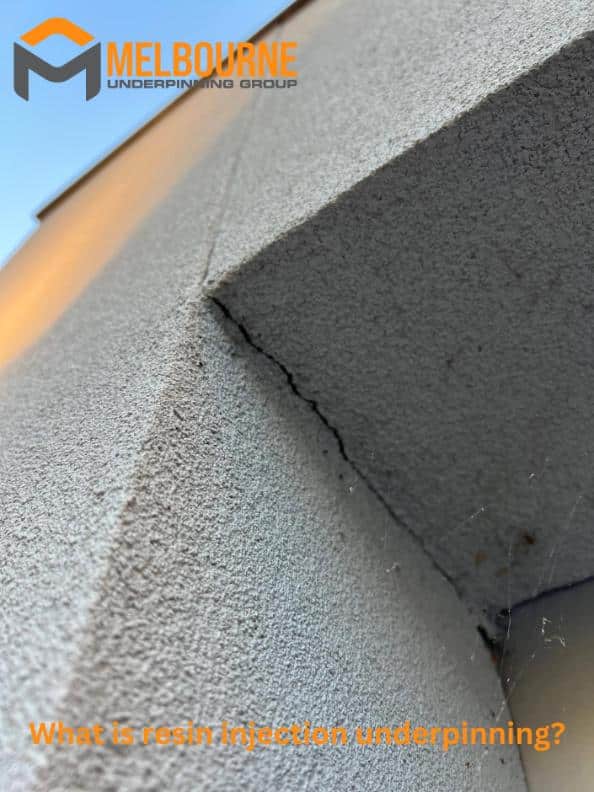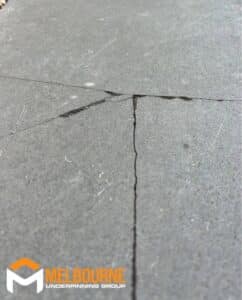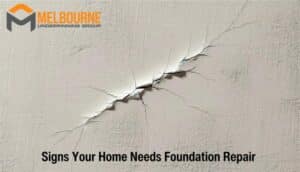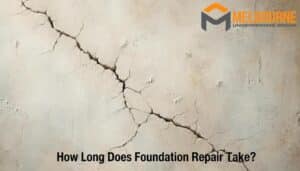
Resin injection underpinning is a modern foundation repair technique used to stabilise and strengthen the foundations of a building. It involves injecting resin into the ground beneath a structure’s foundations. It is gaining popularity in Australia due to its effectiveness in dealing with the diverse soil types and various environmental conditions found across the country.
This form of underpinning a house offers a less invasive solution for homeowners facing foundation issues.
In this blog, we’ll talk more about resin injection underpinning, its advantages, and how it compares to traditional methods.
What Is the Process of Resin Injection Underpinning?
The process of resin injection underpinning involves the following:
- Site assessment: An initial evaluation of the building’s foundation is conducted to determine the extent of the damage and the specific areas that require underpinning.
- Drilling holes: Strategic holes are drilled into the foundation or the concrete slab based on the assessment to allow for the injection of the resin.
- Injecting the resin: A special resin is then injected into the drilled holes, which travels into the voids and unstable areas beneath the foundation.
- Resin expansion and hardening: The injected resin expands and hardens, filling the voids, stabilising the soil, and consolidating the ground beneath the foundation.
- Checking and adjusting: The success of the resin injection is checked, and adjustments are made as necessary to ensure that the foundation is properly supported and stabilised.
- Final inspection: A final inspection is conducted to ensure that the underpinning process has been successful and the foundation is secure and stable.

What Are the Considerations in Resin Injection Underpinning?
Considerations in resin injection underpinning primarily revolve around the suitability of the technique for the specific foundation issue at hand, the type of soil, and the environmental conditions of the site. Also worth considering is how long underpinning takes using this method compared to traditional methods.
Firstly, an evaluation of the structural problem is essential to ascertain whether resin injection is the most effective remedy. Different foundations and soil types respond uniquely to underpinning methods, making it crucial to assess the compatibility of resin injection underpinning with the building’s specific circumstances.
Secondly, the type and viscosity of the resin to be used should be carefully considered, ensuring it’s apt for the particular soil conditions and the nature of the foundation distress. Furthermore, considerations regarding the environmental impact and sustainability of the materials and processes used are also paramount, given the increasing emphasis on eco-friendly construction practices.
Lastly, logistical and practical considerations, such as access to the foundation areas needing repair and the potential disruption caused to the occupants of the building, should be meticulously planned and communicated. These considerations are instrumental in ensuring the success and efficacy of the resin injection underpinning process. If you’re unsure what the best form is underpinning is, or the difference between restumping and underpinning, check out this article.
How Does Resin Injection Underpinning Compare to Traditional Methods?
Resin injection underpinning offers the following benefits compared to traditional methods:
- Speed of completion: Resin injection underpinning is typically faster to complete than traditional methods, reducing the overall disruption and downtime.
- Less invasive: The technique is less invasive, meaning there is less disturbance to the property and its occupants during the repair process.
- Adaptability: Resin injection is adaptable to a variety of soil types and conditions, making it versatile in handling diverse foundation issues.
- Precision: The method allows for a high degree of precision, enabling targeted improvement of the affected foundation areas.
- Cost-effectiveness: Resin injection often proves more cost-effective due to fewer labour requirements and reduced material costs.






